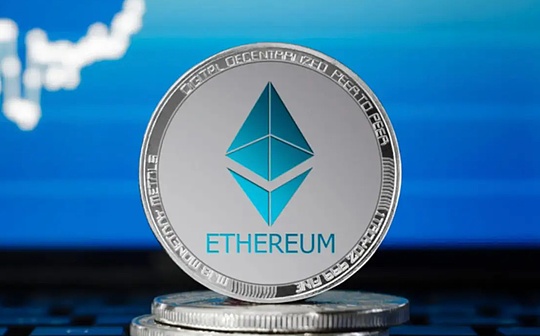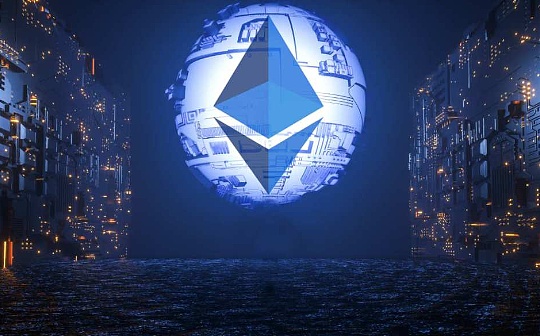
Author: Zach Pandl, Michael Zhao, Grayscale; Compiled by: Deng Tong, Bitchain Vision
summary
-
The Ethereum network is the leading smart contract blockchain in terms of market capitalization and total locked value [1], which carries a wealth of applications, many of which offer their own investable tokens.However, the Ethereum ecosystem is very diverse, and each token has unique fundamentals.
-
When studying a wider ecosystem, one may focus on tokens that show strong fundamental characteristics.These factors may include strong user engagement, transparent value creation mechanisms and controlled supply growth.In the Ethereum ecosystem, some of the well-known assets that show these characteristics are tokens associated with decentralized financial applications such as AAVE, MKR, and UNI, as well as LDOs associated with staking applications.
-
The design of the Ethereum network means that most activity on the platform is associated with its native token, Ether (ETH).Therefore, the value of ETH often reflects the overall activity and growth of the Ethereum ecosystem.The relationship between network usage and token value is a significant aspect of the Ethereum economic model.
-
The ETH beta strategy aims to mimic ETH’s performance using alternative tokens, which performs poorly compared to direct holding of ETH, as we show in this analysis (Figure 4).This is because most alternative tokens lag behind ETH, and only a few tokens surpass it.Another approach is to diversify investments in multiple promising projects rather than focusing on a single alternative token.
At the heart of Ethereum is a blockchain-based platform that enables developers to build and deploy smart contracts and decentralized applications (dApps).This feature has spawned a rich project ecosystem covering a variety of fields, including decentralized finance (DeFi), non-fungible tokens (NFT), and gaming.Many of these projects have issued their own tokens, expanding the crypto asset ecosystem.
However, investors must realize thatThe assets in the Ethereum ecosystem are far from united.Tokens may vary greatly in terms of use cases, supply inflation, historical volatility and value accumulation mechanisms.Some tokens are used as governance tokens for decentralized autonomous organizations (DAOs), some as practical tokens in specific applications, and some as representatives of real-world assets.
Explore the ETH ecosystem
While the Ethereum ecosystem contains tens of thousands of tokens [2], in this report, we focus on a set of important assets specified in Grayscale Crypto Sectors – which is our system for digital assets and related index seriesClassification framework.These assets represent aspects of the Ethereum ecosystem, from DeFi protocols to layer 2 solutions and infrastructure projects (Figure 1) [3].
Chart 1: Ethereum Ecosystem Tokens and Grayscale Cryptocurrency Division

Given the complexity of the ecosystem, we can classify the main components according to the Grayscale Crypto Sectors data as follows (see the Grayscale Glossary for more context on the term):
Layer 2 (L2) Solution, such as Polygon (MATIC), Arbitrum (ARB), and Optimism (OP), aim to improve Ethereum’s scalability by handling off-main chain transactions, aiming to increase speed and reduce fees while keeping the network secure.
Financial applications utilize smart contracts to provide financial services without traditional intermediaries.Notable examples include the leading decentralized exchange Uniswap (UNI), the major lending platform Aave (AAVE), and the protocol behind DAI stablecoins MakerDAO (MKR).
Other applications include a wide range of services that support a wider ecosystem.For example, Ethereum Name Service (ENS) provides a distributed naming system.In the NFT space, markets like Blur have gained attention among traders.Finally, while meme tokens such as Shiba Inu (SHIB) are not core functions of Ethereum, it has become an important part of the ecosystem in terms of market capitalization and community engagement [4].
“Gaobeta” argument
Crypto native investors sometimes view ecosystem assets as a “high beta” way to invest in Ethereum’s development.This view is not unreasonable, as many ecosystem assets do show high short-term correlations with Ethereum Year-to-Date (YTD) returns (Figure 2).However, this view oversimplifies the complexity of these assets.Each ecosystem token has unique features and should be evaluated separately.
Figure 2: Ethereum ecosystem tokens tend to remain relevant year-to-date with ETH
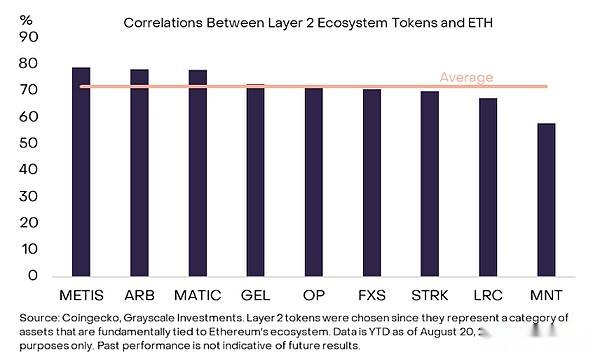
The performance of selected assets this year highlights that short-term correlations may not have a good guiding role in the asset’s medium-term performance.For example, ETH itself has appreciated 14% so far this year.Meanwhile, ARB and MATIC (two relatively large Layer 2 solutions with high short-term correlations with ETH) actually fell 54% and 65%% respectively (Figure 3).Although these protocols are deeply integrated and may share many of the same users, the fundamentals of tokens as well as price returns may vary considerably.
Figure 3: Some famous Ethereum ecosystem tokens have performed poorly so far this year
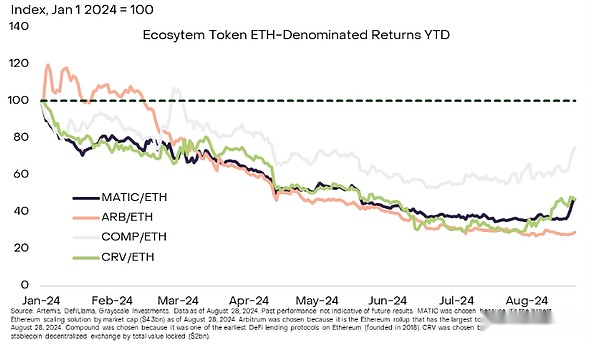
Token diversity
The Ethereum ecosystem is diverse, with significant differences in assets across multiple dimensions (Figure 4):
Figure 4: There are significant differences in Ethereum ecosystem assets based on use cases and fundamentals
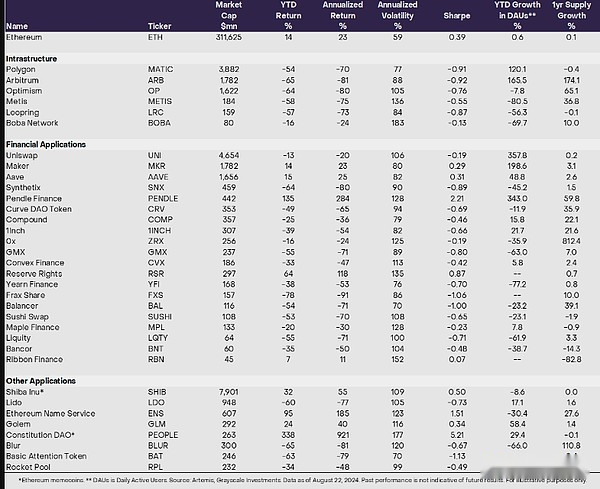
The volatility and risk-adjusted returns of the Ethereum ecosystem suggest that tokens generally exhibit higher volatility compared to ETH, reflecting ETH’s position as a larger, more mature asset.Therefore, only a few ecosystem tokens are able to achieve a higher Sharpe ratio than ETH itself [5], highlighting the challenge of surpassing ecosystem underlying assets on the basis of risk adjustment.
The Ethereum ecosystem tokens show diversified supply growth modes, unlike ETH’s (main) deflation model [6].New projects often use higher initial inflation to promote adoption and fund development, while mature projects may reduce or fix supply plans.Some tokens implement adaptive mechanisms to adjust supply according to usage or market conditions.这些通胀策略可以显著影响代币的长期价值。If demand growth does not match, high inflation may dampen prices, and a well-designed timeline can help support sustainable growth.The token supply growth model usually reflects the maturity of the project and the value creation process.
Trends of specific application activity measured by key indicators such as total locked value (TVL), daily active users, transaction volume and incurred fees can indicate the attractiveness and economic viability of the project.For example, the rise in TVL in the DeFi protocol may indicate an increase in user trust and capital efficiency, while the increase in transaction fees may indicate a high demand for the service.However, these metrics should be explained in conjunction with the specifics; Tier 2 solutions may prioritize low fees and high transaction volumes, while lending platforms may focus on TVL growth.Furthermore, trends in these metrics can reveal competitive dynamics in specific areas of the Ethereum ecosystem.Strong on-chain metrics are not always directly related to the appreciation of token price, as seen in some cases, protocols with high TVL or fees incurred may still experience disappointing due to factors such as token distribution or market sentiment.token performance.
Performance comparison
Figure 5: ETH performance leads average and median

So far, ETH has outperformed its ecosystem tokens in both average and median cumulative earnings in 2024 (Figure 5).ETH also showed better risk-adjusted performance, which was reflected in higher Sharpe ratios.However, from the long-term historical data, the situation is even more subtle.During some bull markets, some Ethereum ecosystem tokens outperformed ETH on average.For example, in the bull market from 2020 to 2021, meme tokens such as SHIB significantly exceeded ETH[7], improving the average return rate of the ecosystem token basket.
To date this year, specific tokens like ConstitutionDAO (we also consider memecoin) and ENS are major contributors to the outstanding performance of other application categories.By contrast, Tier 2 solutions and financial applications underperformed ETH during this period.Grayscale Research believes thatThe excess return potential of ecosystem tokens seems to be concentrated on a few excellent performance assets.
ETH tends to outperform its ecosystem tokens so far this year, both on average and on median.However, a few outstanding tokens in the ecosystem may outperform ETH (Figure 4).The analysis shows that while ecosystem tokens can provide opportunities to gain significant gains, these opportunities are not evenly distributed.Historically, ETH has performed more stably over a longer period of time.
Given the performance distribution of ecosystem tokens,A basket of ecosystem assets can provide the risk of potentially performing people while helping to reduce the risk of selecting underperformers.
Asset selection method
While a diversified portfolio of Ethereum ecosystem assets can be a viable investment strategy, a more targeted approach to focusing on specific asset selection may yield better results – despite introducing more special risks at the same time.This approach involves identifying assets with good fundamentals and/or potentially positive catalysts.Key considerations for asset selection include strong or constantly improving fundamentals (such as usage indicators, market leadership and innovative features), reasonable inflation rates and price trends.
Some tokens show strong fundamentals, but the recent price performance may provide an attractive entry point.For example, UNI (Uniswap) as a key DeFi primitive shows high usage rates but experiences range price trends.Similarly, LDO (Lido) is leading the way in liquidity staking, and despite the underperforming price, TVL has a high ratio to market capitalization.Other tokens such as MKR (Maker) and AAVE performed well in both indicators, with MKR accounting for nearly 40% of Ethereum’s DeFi profits [8] and holding the largest real-world portfolio, while AAVE achievedRecord user engagement, TVL in 14 active markets exceeded $11 billion.[9]
Figure 6: Some tokens show strong protocol fundamentals, but weaker relative price trends

It is also important to be cautious about certain assets.Potential considerations may include tokens with limited utility besides governance, especially when their market capitalization is significantly greater than the value of the assets they manage.Projects with reduced user base or continued negative expenses may indicate a decrease in correlation or an unsustainable economic model.Large, regular token unlocking events also help create selling pressure and volatility.Finally, assets with a larger market capitalization but relatively small TVL or lack a significant growth catalyst are often overvalued.For Grayscale Research, these characteristics often indicate that the token’s current valuation is inconsistent with its underlying utility or growth prospects.
When evaluating a declining or failing Ethereum ecosystem token project, more than just current success can be important information—in other words, control for survivor bias.For example, once popular projects like Augur have significantly decreased usage and correlation over time.Many of the tokens in the 2017-2018 IPO boom have completely lost their relevance.If we only consider the current major players, we may overestimate the overall success rate, underestimate the risk, and misunderstand the real factors behind the success or failure of the project.
This strategic approach is designed to identify assets with practical utility, growing user base and effective token economics that may outperform simple basket strategies.However, it requires ongoing research and regular portfolio adjustments.
in conclusion
From our analysis of Ethereum ecosystem assets, we have drawn several key points.As a platform for numerous dApps, Ethereum’s native token, ETH, is perhaps the easiest way to participate in the growth of the entire ecosystem.The Ethereum network is the infrastructure of many dApps, but ETH also has several specific advantages: low supply growth, especially after the merger, which facilitates long-term preservation; demand for exchange-traded products may increase, as recently approved and releasedSee; and a strong network effect, as Ethereum’s dominance in smart contract platforms continues to attract developers and users (see our“Grayscale: Why is Ethereum performing poorly?What will happen in the future?》Report).
The Ethereum ecosystem is full of innovative projects that may provide more potential upside, while also putting investors at more potential risks.These include DeFi protocols that revolutionize financial services, Tier 2 solutions to scalability, and infrastructure projects that support a wider ecosystem.Diversified investment methods, such as investing in a basket of assets, such as a selection of top-tier DeFi tokens, can be widely involved in the growth of the ecosystem while seeking to reduce certain project-specific risks.Alternatively, a study-based selective approach, carefully selecting individual projects based on the fundamentals, practicality and growth prospects of projects can result in higher returns despite the higher risks.
References
[1] As of August 27, 2024, Ethereum is the largest smart contract platform by market value and total locked value.Source: CoinGecko, DefiLlama
[2] https://coinmarketcap.com/view/ethereum-ecosystem/
[3] Note: Ethereum (ETH) itself has a market capitalization of approximately $319 billion, dwarfing other assets in the ecosystem.Source: Artemis, Grayscale Investments.Data as of August 27, 2024.
[4] As of August 27, 2024, Shiba ranked 13th by market capitalization.Source: Artemis, Grayscale Investments
[5] The Sharpe ratio compares the return on investment with its risk.The numerator of the Sharpe ratio is the return, and the denominator is the standard deviation of the return for the same period.
[6]https://consensys.io/blog/what-is-eip-1559-how-will-it-change-ethereum
[7]https://decrypt.co/89069/bigger-gains-than-bitcoin-or-ethereum-top-crypto-assets-2021
[8] https://www.syncracy.io/writing/makerdao-thesis
[9] https://defilama.com/protocol/aave#information


